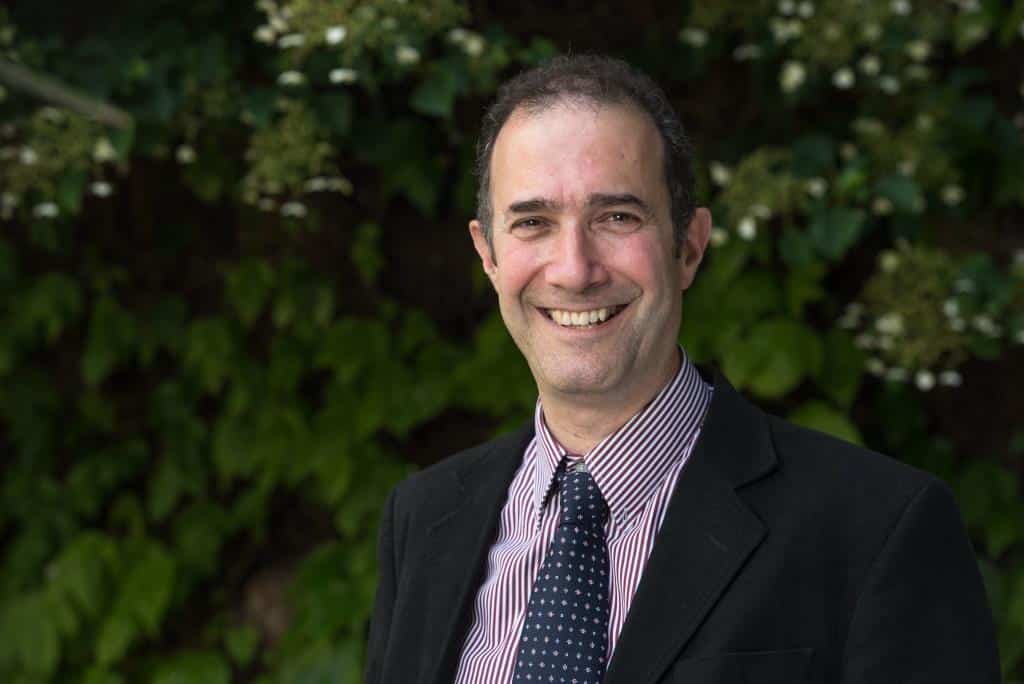Profile
Professor Jordan Raff FRS

Profile
I studied Biochemistry at the University of Bristol (BSc, 1986), followed by a PhD in the Biochemistry Department, Imperial College, London (1989). Here I started to work on the cell cycle and centrosomes using the fruitfly Drosophila as a model system. I moved to the Department of Biophysics and Biochemistry at the University of California, San Francisco (1990), developing live-cell imaging and biochemical methods, still focused on centrosomes in Drosophila. I established my own group as a Wellcome Senior Research Fellow at the Gurdon Institute in Cambridge (1994), before becoming the César Milstein Chair of Cancer Biology at The Dunn School of Pathology, and Lincoln College, in (2009). We still study centrosomes and the cell cycle in flies.
College teaching
I don’t currently have any teaching responsibilities at the College, although I do have a role in looking after and advising some of the graduate students who work at The Dunn School.
- Research
-
Centrosomes are tiny intracellular structures that help organise the 'skeleton' inside our cells. Centrosome dysfunction has been linked to several human diseases, including cancer. We study how centrosomes assemble in fly embryos. We have developed sophisticated methods that enable us to visualise and measure how proteins incorporate into assembling centrosomes. We are deriving mathematical models of the assembly process and are testing them in mutant flies in which specific centrosome proteins have been altered to see how the alteration affects centrosome assembly. Our studies have led to several important discoveries - most notably, that centrosome assembly is regulated by a molecular 'clock'. This is the first demonstration that a clock can regulate the assembly of a cell structure. We aim to understand how this clock regulates centrosome assembly, and test whether similar clocks might regulate and coordinate the assembly of other cell structures.
- Select publications
-
Aydogan, M.G., Steinacker, T.L., Mofatteh, M., Gartenmann, L., Wainman, A., Saurya, S., Wong, S.S., Zhou, F.Y., Boemo, M.A.*, and Raff, J.W.* (2019). An autonomous oscillator times and executes centriole biogenesis. bioRxiv, 510875.
Alavarez Rodrigo, I., Steinacker, T.L., Saurya, S., Conduit, P.T., Baumbach, J., Novak, Z.A., Aydogan, M.G., Wainman, A., and Raff, J.W. (2019). Evidence that a positive feedback loop drives centrosome maturation in fly embryos. eLife. 8:e50130.
Aydogan, M.G., Wainman, A., Saurya, S., Steinacker, T.L., Caballe, A., Novak, Z.A., Baumbach, J., Muschalik, N., and Raff, J.W. (2018). A homeostatic clock sets daughter centriole size in flies. J. Cell Biol., 217, 1233-1248. Doi:10.1083/jcb.201801014.
Gartenmann, L., Wainman, A., Qurashi, M., Kaufmann, R., Schubert, S., Raff, J.W.*, and Dobbie, I.M.* (2017). A combined 3D-SIM/SMLM approach allows centriole proteins to be localized with a precision of ~4-5nm. Curr. Biol. 27, R1054-1055.
Feng, Z., Caballe, A., Wainman, A., Johnson, S., Haensele, A.F.M., Cottee, M.A., Conduit, P.T., Lea, S.M.*, and Raff, J.W.* (2017). Structural basis for mitotic centrosome assembly in flies. Cell 169, 1078-1089.
Position
- César Milstein Professor of Molecular Cancer Biology